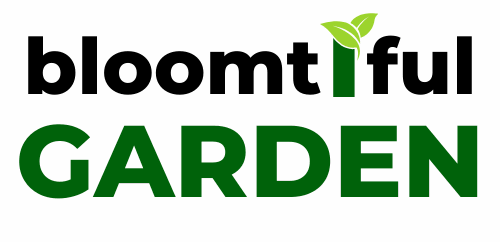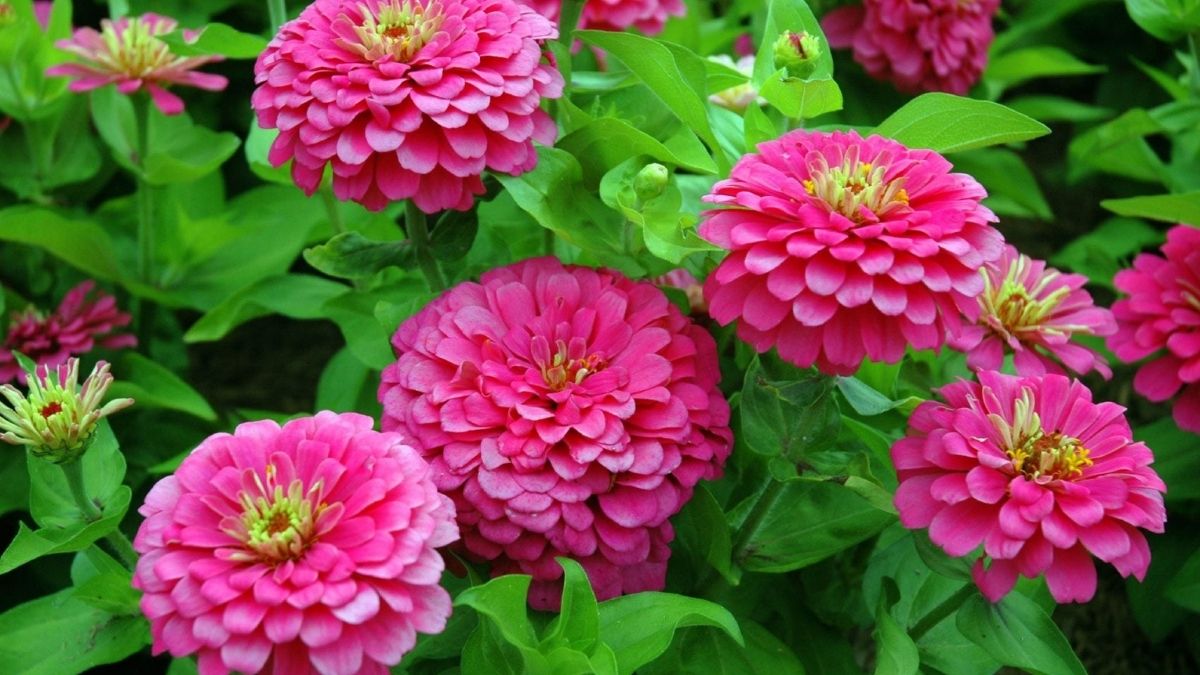Heading into 2026, U.S. beekeepers reported a shocking loss of nearly 55% of their colonies. This statistic highlights the urgent reality of pollinator decline happening right now.
The problem often starts in our own backyards. Many modern gardens have become “food deserts” for insects, filled with perfectly manicured lawns and pollen-less hybrid flowers.
These choices create a landscape where insects starve because they cannot find enough fuel. To fight this loss of biodiversity, you need the right plants.
We created a curated list of 14 resilient, high-nectar plants designed to bloom from early spring to late fall. This approach to native gardening ensures there is always food available. It is time to stop planting just for looks and start planting for survival.
🦋 2025 Native Plant List 🐝
1. Milkweed: The Monarch Survival Kit
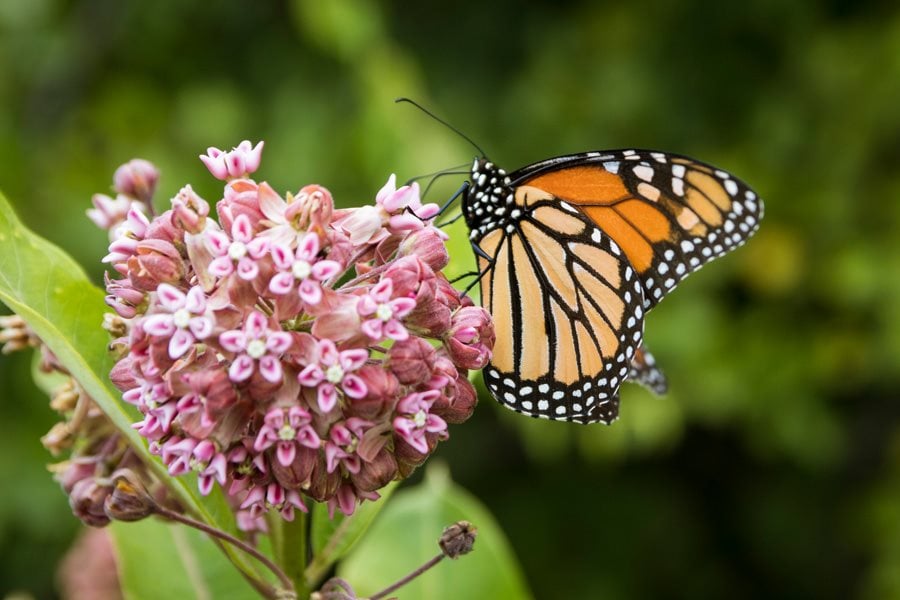
Milkweed is vital because it is the only plant Monarch caterpillars eat. Without this plant, these butterflies cannot reproduce or survive. You need to plant this to support the next generation of Monarchs.
The flowers have a special shape that holds high-quality nectar. This design feeds hungry wasps and bees that visit your garden. It provides a strong energy source for many different insects.
In 2025, gardeners are choosing native types like Swamp or Butterfly Weed. These are better choices than Tropical Milkweed because they fit the local ecosystem. Native varieties help prevent disease spread in butterfly populations.
Tip: Plant in groups of 3-5 to create a “target” monarchs can spot from the air.
2. Bee Balm: A Hummingbird Magnet
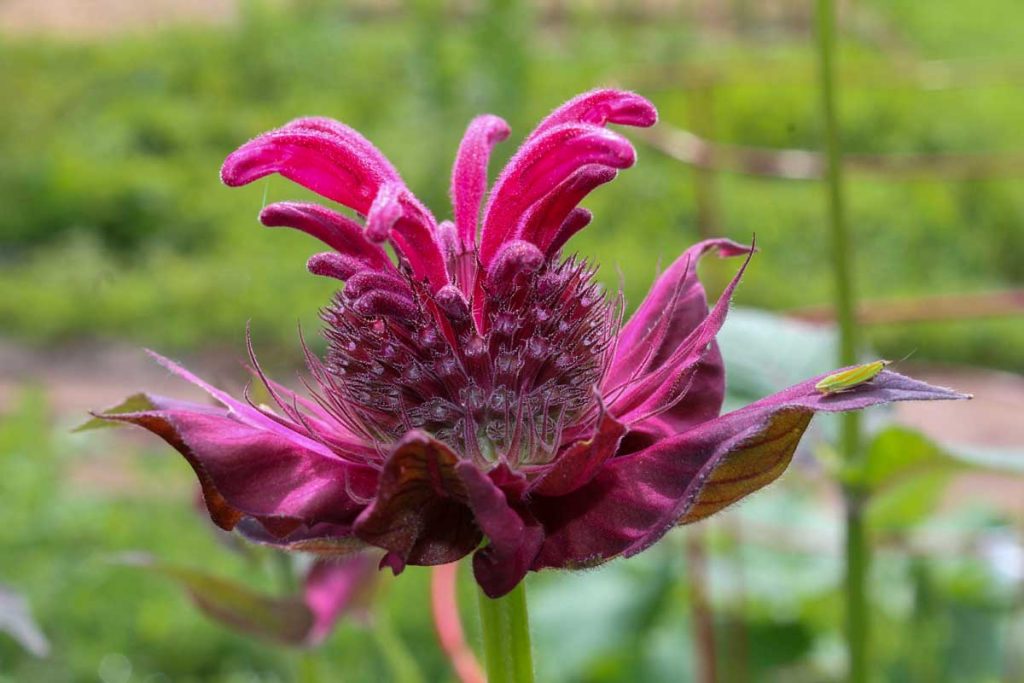
This plant has tube-shaped flowers that are perfect for specific pollinators. Long-tongued bees and hummingbirds love to reach deep inside for nectar. It gives them food that flat flowers cannot provide.
If you live near woods, you will like that deer usually leave this plant alone. The strong scent keeps them away, so your garden stays safe. This makes it a very practical choice for suburban yards.
Bee Balm comes in bright colors like red, pink, and purple to match your style. It spreads quickly to fill up empty spaces in your flower beds. You get a lot of color without buying many individual plants.
Tip: Look for powdery mildew-resistant varieties to keep foliage healthy in humid summers.
3. Coneflower: The Butterfly Landing Pad
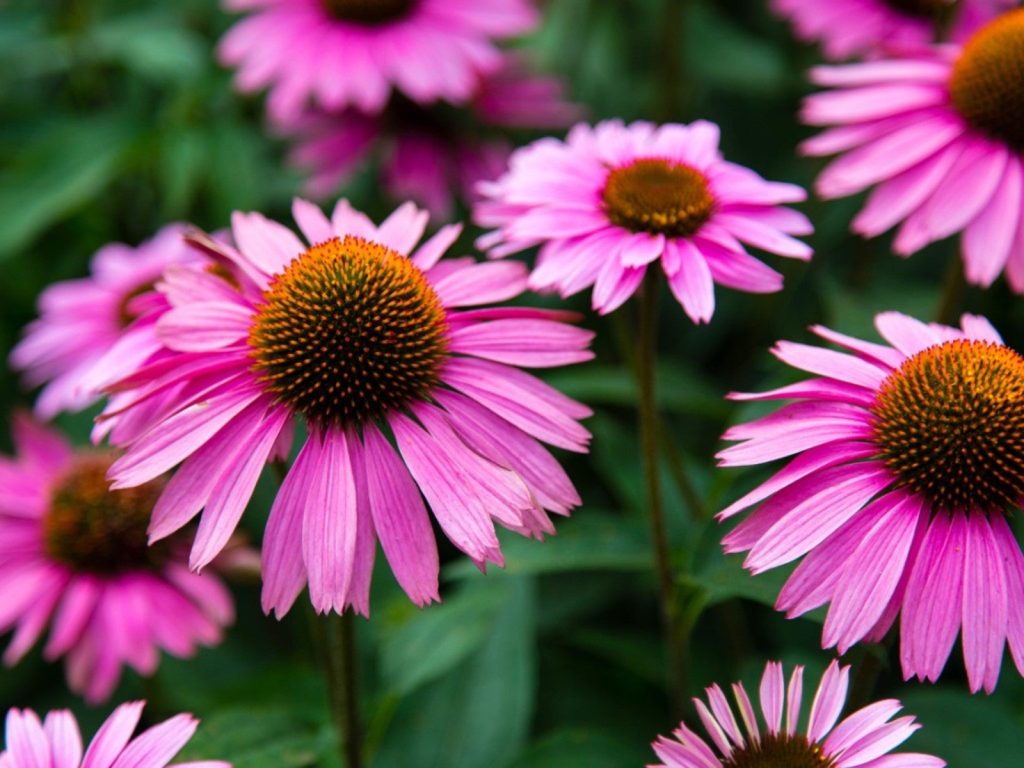
This native perennial is a staple in many pollinator gardens. The flat center works like a landing pad for butterflies to rest on while they eat. It makes it easy for you to watch them work.
Summers are getting hotter, and this plant handles dry weather very well. Once it starts growing, it does not need constant watering. This toughness makes it essential for the hot summer of 2025.
Do not cut the dead flowers down when winter comes. The seed heads provide fat and energy for Goldfinches during the cold months. It helps birds survive when other food is hard to find.
Tip: Avoid “double-bloom” hybrids; they often lack pollen. Stick to the single-flower native look.
4. Goldenrod: Late-Season Fuel for Bees

Many people think this plant causes hay fever, but that is actually ragweed’s fault. Goldenrod pollen is heavy and sticky, so it does not float in the wind. You can plant this without worrying about sneezing.
This flower is the most important fuel source for bees before winter. It gives them the energy they need to survive hibernation. Without it, many bees might starve before spring returns.
If you have a small yard, look for “Fireworks” or “Zigzag” varieties. These types grow in a controlled way and fit well in smaller spaces. You get the benefits without the plant taking over your whole garden.
Tip: Pair with Asters for a stunning purple-and-gold fall display that maximizes pollinator nutrition.
5. New England Aster: The Migration Helper
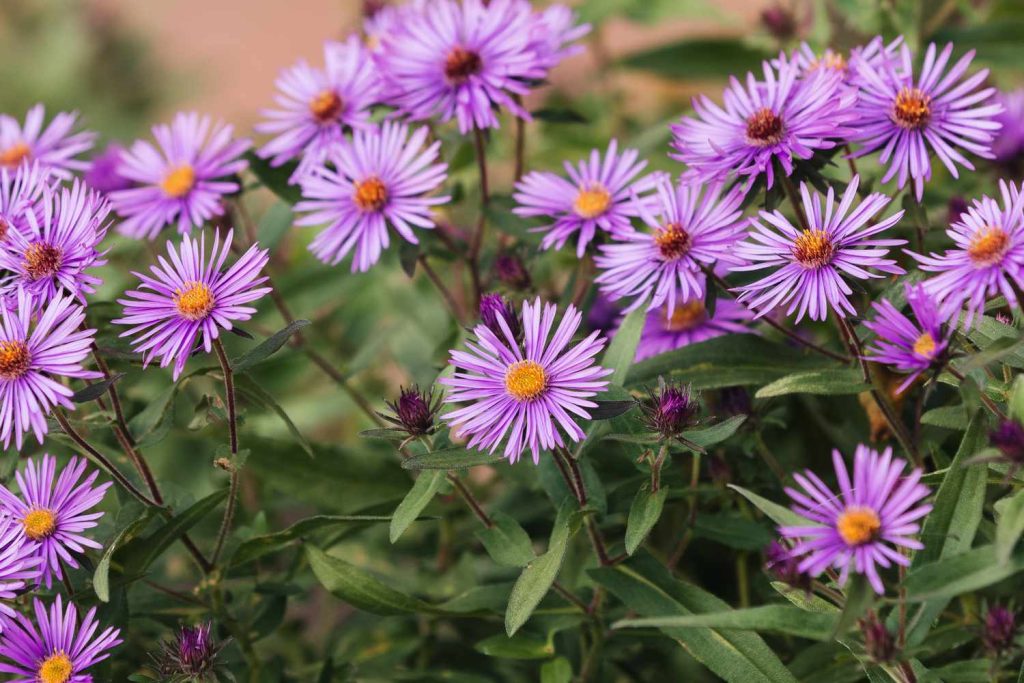
This is a late-season hero that blooms when other flowers have died. It keeps your garden colorful while everything else turns brown. You get to enjoy purple blooms right up until winter.
Migrating Monarchs need this flower to fuel their long trip to Mexico. It provides the rich nectar they need for such a hard journey. Planting this helps them finish their migration safely.
New England Asters are very tough and can handle cold weather. They often survive the first light frosts of autumn without taking damage. This extends the feeding season for late pollinators.
Tip: Pinch back stems in June to encourage bushier growth and more flowers in September.
6. Lavender: The Drought-Proof Choice
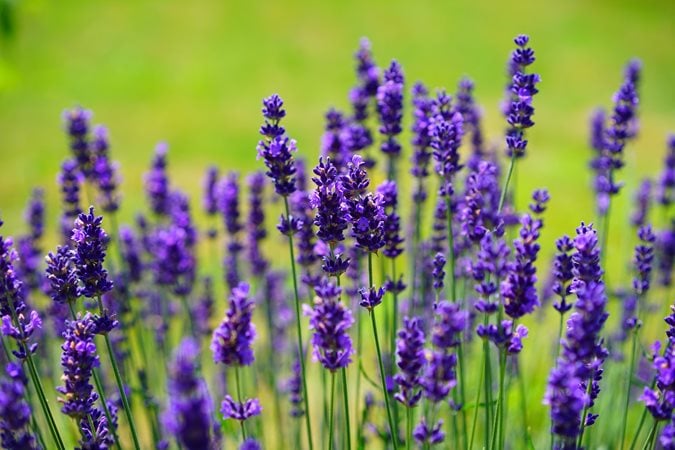
People love the smell, but bees love how fast the nectar refills. This plant makes more food quickly, so bees can keep coming back. It serves as a reliable restaurant for hungry insects.
Lavender thrives in poor soil where other plants might struggle. It needs very little water once the roots are established. This makes it perfect for dry spots in your yard.
It blooms in early summer when spring bulbs are gone but summer flowers aren’t ready. This bridges a critical food gap for local pollinators. It ensures there is always something to eat in your garden.
Tip: Requires excellent drainage. Add gravel to the planting hole if you have clay soil.
7. Sunflower: Easy Growing for Beginners
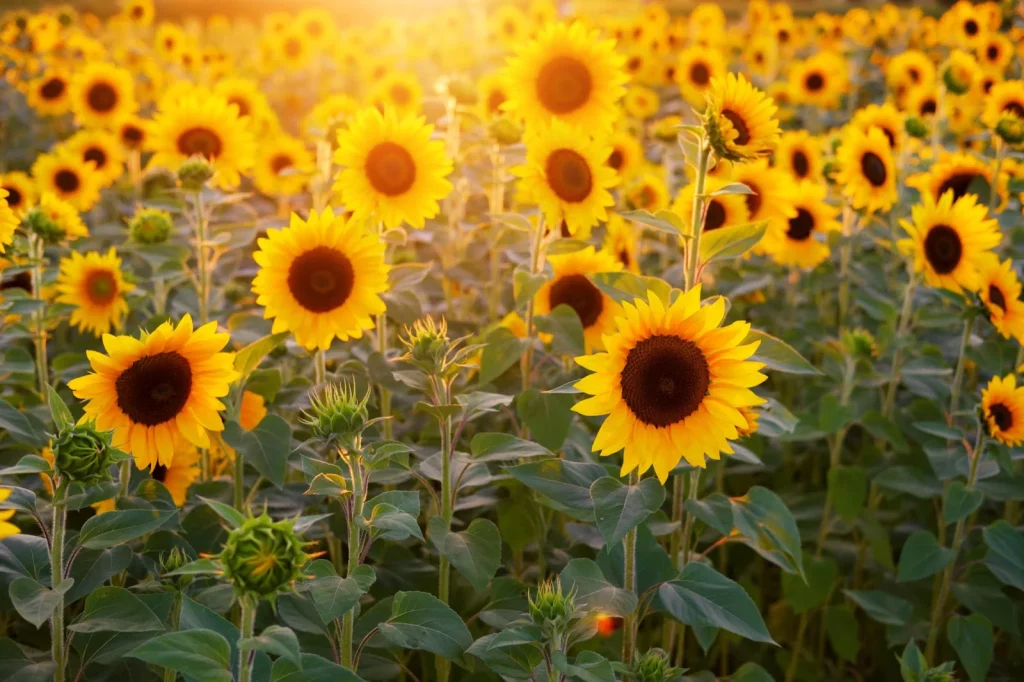
These giants are pollen powerhouses that attract many types of insects. Some specialist bees will only feed on sunflowers and nothing else. Planting these supports species that rely on this specific food.
You can grow these easily from seed, which saves money. It is a great project to do with kids or for beginner gardeners. You see fast results without needing special skills.
Look for “branching” varieties instead of the single-stem types. These produce multiple blooms over several weeks instead of just one flower. This gives you more color and more food for the bees.
Tip: Choose pollen-producing varieties (avoid “pollen-free” florist types) to actually feed the bees.
8. Black-Eyed Susan: The Summer Staple
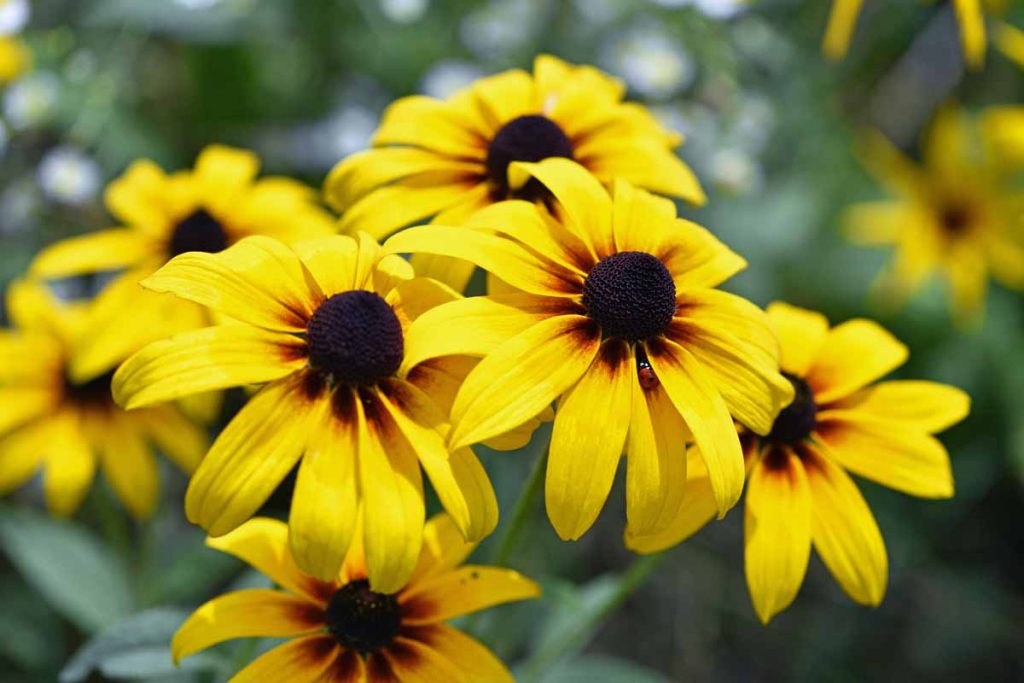
This cheerful native plant blooms for weeks during the middle of summer. It adds bright yellow color when the sun is at its strongest. You get a long-lasting display without much effort.
It acts as a host plant for the Silvery Checkerspot butterfly caterpillar. By planting this, you provide a nursery for these specific butterflies. It helps increase the butterfly population in your area.
Black-Eyed Susans are extremely low maintenance. They tolerate high heat and humidity without wilting or dying. This makes them a reliable choice for tough summer climates.
Tip: Leave the dead flower heads up in winter; they provide shelter for sleeping insects.
9. Blazing Star: Vertical Interest for Small Spaces
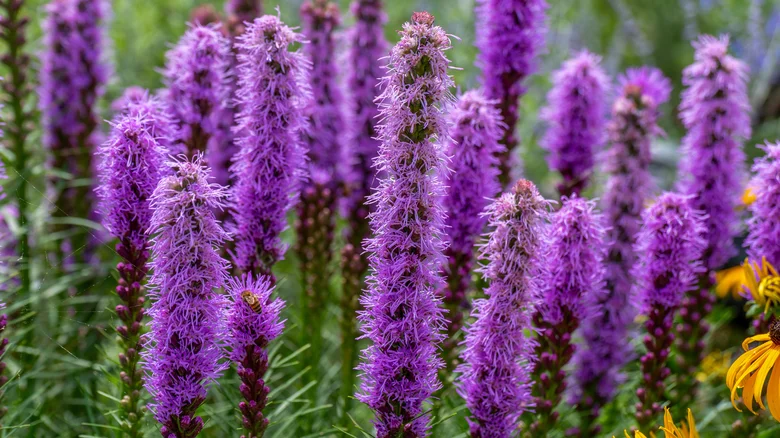
This plant features unique purple spikes that bloom from the top down. It looks different from the daisy shapes found in most gardens. This adds an interesting visual element to your flower beds.
The flowers act like a magnet for Swallowtail butterflies and bumblebees. You will likely see them covering the spikes on sunny days. It creates a busy hub of activity in the garden.
Blazing Star adds height without taking up much ground space. You can fit it into tight spots between other plants. It helps you fit more diversity into a small area.
Tip: These grow from corms (bulbs). Plant them in clusters for a dramatic visual impact.
10. Catmint: Long Blooms, Fewer Pests

This perennial blooms for a long time, often from late spring until fall. It gives you months of color for a single planting effort. You get a great return on your investment.
The leaves smell minty and help repel pests like aphids. While bad bugs hate it, pollinators love the flowers. It acts as a natural protector for your other plants.
Choose sterile varieties like “Walker’s Low” so they don’t spread everywhere. These types stay in their own space and are easy to manage. You won’t have to pull up unwanted seedlings next year.
Tip: After the first flush of blooms fades, shear it back by half to trigger a second bloom.
11. Salvia: The Water-Wise Option
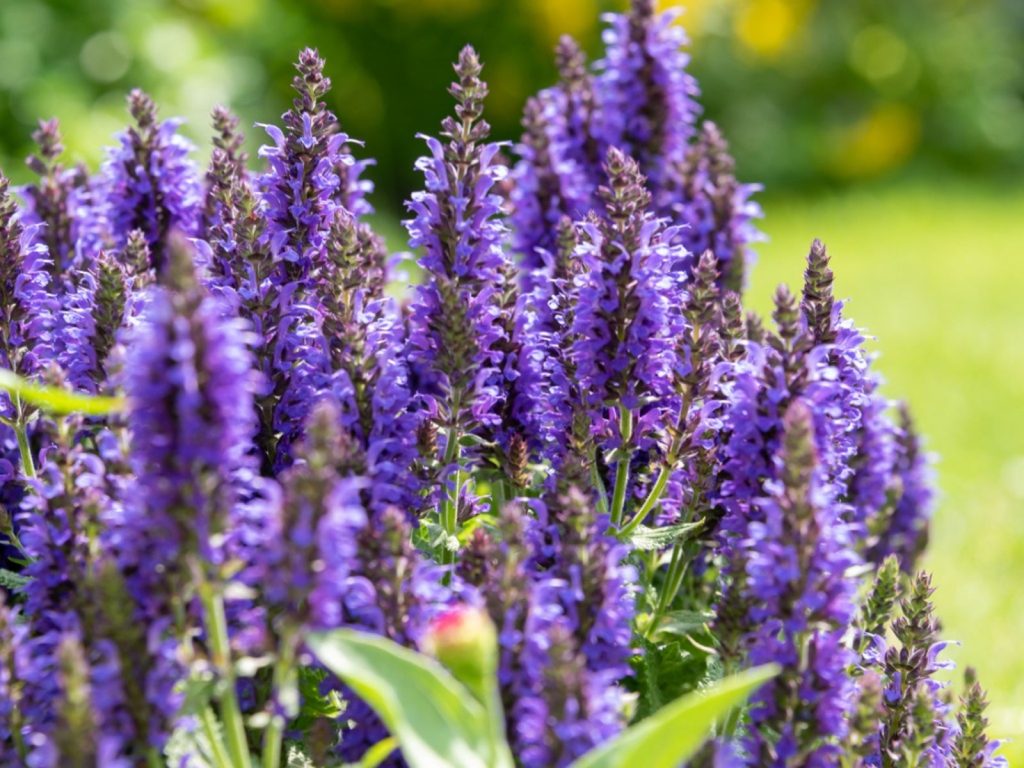
The deep, tube-shaped flowers are highly attractive to hummingbirds. Larger bees also visit them to get nectar. If you want to see hummingbirds, this is a must-have plant.
Salvia is highly drought-resistant and needs little water. This fits perfectly with the “water-wise” gardening trend for 2025. It stays healthy even when rain is scarce.
You can find both perennial and annual varieties at the store. This gives you flexibility regardless of your garden size or budget. You can fill pots or large beds with ease.
Tip: Deadhead (remove spent blooms) regularly to keep the plant producing nectar all season.
12. Borage: Fast Food for Bees

This herb has blue star-shaped flowers that refill nectar in minutes. Because the food comes back so fast, bees stay on the plant longer. It is a highly efficient feeder for your garden ecosystem.
Borage attracts honey bees and bumblebees in huge numbers. The flowers are also edible for humans and look great in salads. You get food for the bees and a treat for yourself.
This is an annual plant that drops seeds easily. It usually grows back on its own year after year. You plant it once and enjoy it for a long time.
Tip: Plant near vegetable crops like tomatoes; it attracts bees that will then pollinate your veggies.
13. Mountain Mint: The Diversity Champion

Scientists often say this is the number one plant for insect diversity. It attracts a wider variety of pollinators than almost anything else. If you want a busy ecosystem, start here.
The plant has a fresh smell and silvery leaves. It looks beautiful at night in moonlight gardens. It adds texture and scent to your landscape.
This is a very hardy native plant that supports tiny wasps. These wasps eat garden pests, acting as natural pest control. It keeps your garden healthy without chemicals.
Tip: It can be aggressive. Plant it in a pot sunken into the ground or a contained area.
14. Zinnia: Instant Color and Gratification
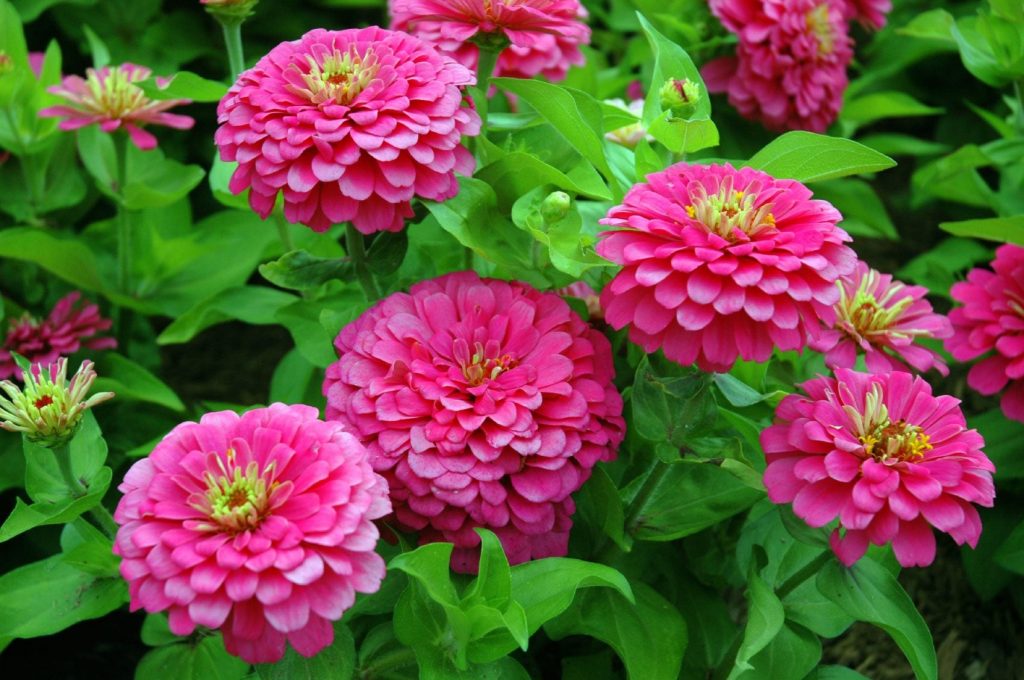
Zinnias are annuals that give you instant color and gratification. They grow fast and look bright right away. You do not have to wait years for them to look good.
The wide, flat shape serves as a perfect landing pad. Large butterflies like Swallowtails love to rest on them. It makes for great photo opportunities in the summer.
These flowers bloom continuously until the first hard frost kills them. As long as you remove old flowers, new ones keep coming. They provide late-season food when perennials might be done.
Tip: Sow seeds directly in the ground after the last frost; they dislike being transplanted.
Conclusion
You don’t need a farm to help the bees. Even a single pot of Lavender or a small patch of Milkweed makes a big difference. These plants give insects a safe place to rest and eat in a world full of concrete.
Start small this weekend. Buy just one native plant from this list and promise to stop using pesticides in your yard. Every small change adds up to a healthier, more beautiful pollinator-friendly landscape.
Would you like me to create a planting calendar for these specific flowers so you know exactly when to start them?
